ChatGPT Alternatives: A Comparison of AI-Language Models
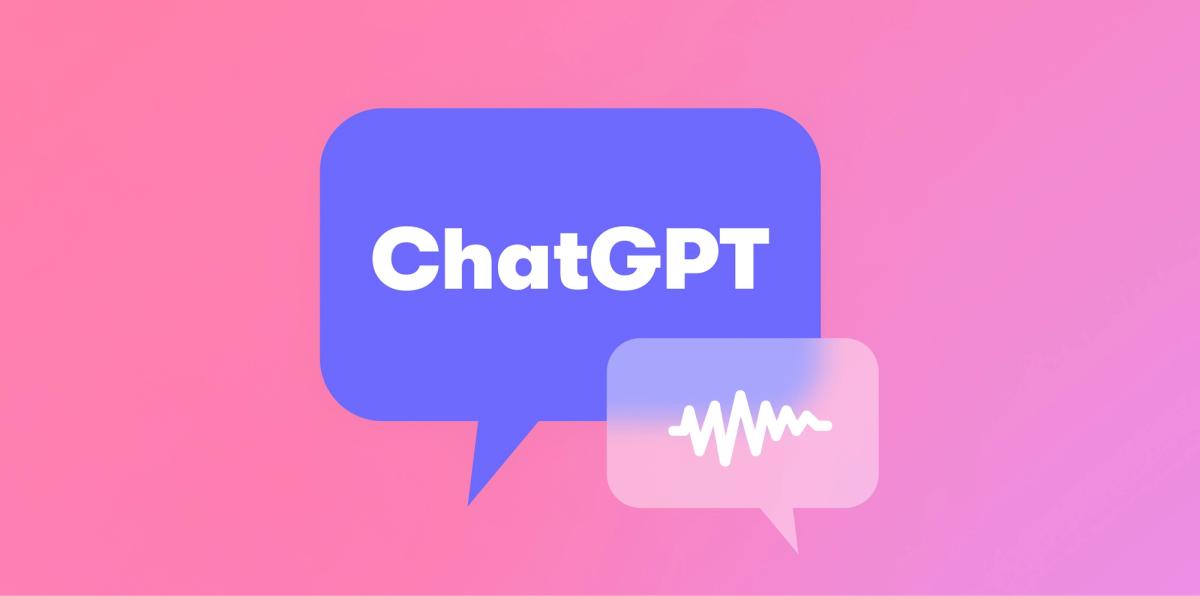
Alternatives to ChatGPT: Collato vs. ChatGPT vs. Bard
A lot has changed since ChatGPT was publicly released a year ago. Everyday work has changed rapidly, monotonous work has been automated, jobs have been made and replaced, and every company seems to have an AI-centered product.
Other models like ChatGPT have recently been released, too. Google has thrown its hand in the ring with Bard, a Google Search-integrated chatbot that’s known for its storytelling prowess. And, there are a slew of other tools that can revolutionize the way we work.
Collato’s AI assistant revolutionizes how teams find their knowledge. Collato’s AI assistant empowers teams to find, summarize, and generate content based on their knowledge. Let’s take a closer look, and compare Collato to ChatGPT and Bard.
What Exactly are AI-Language Models?
Before we dive deeper, let’s establish some key terms that will pop-up as we discuss:
- AI: At its core, AI refers to machines' ability to mimic cognitive functions such as problem-solving and learning.
- Natural Language Processing (NLP): This subfield of AI focuses on the interaction between computers and humans through natural language. The goal of NLP is to read, decipher, understand, and make sense of human language in a valuable way.
- Machine Learning (ML): This is a technique used by AI that provides systems with the ability to learn and improve from experience without being explicitly programmed.
- Deep Learning (DL): As a subset of ML, DL imitates the working of the human brain in processing data for use in decision-making. It's the technology behind the most complex language models like Bard and ChatGPT.
- Large language models (LLMs): These types of AI can generate and understand text. LLMs are trained on massive datasets of text and code, which allows them to learn the patterns of human language. This allows LLMs to perform a wide range of tasks, including generating text, translating languages, writing different kinds of creative content, and answering questions in an informative way.
All of these components work together and enable machines to understand, generate, and interact using human language.
Introduction to Collato
Collato is an AI-powered assistant designed to help teams find, summarize, and generate new content from their team's collective knowledge. It is a cloud-based platform that integrates with popular productivity tools such as Slack, Jira, Confluence, Notion, and Google Docs.
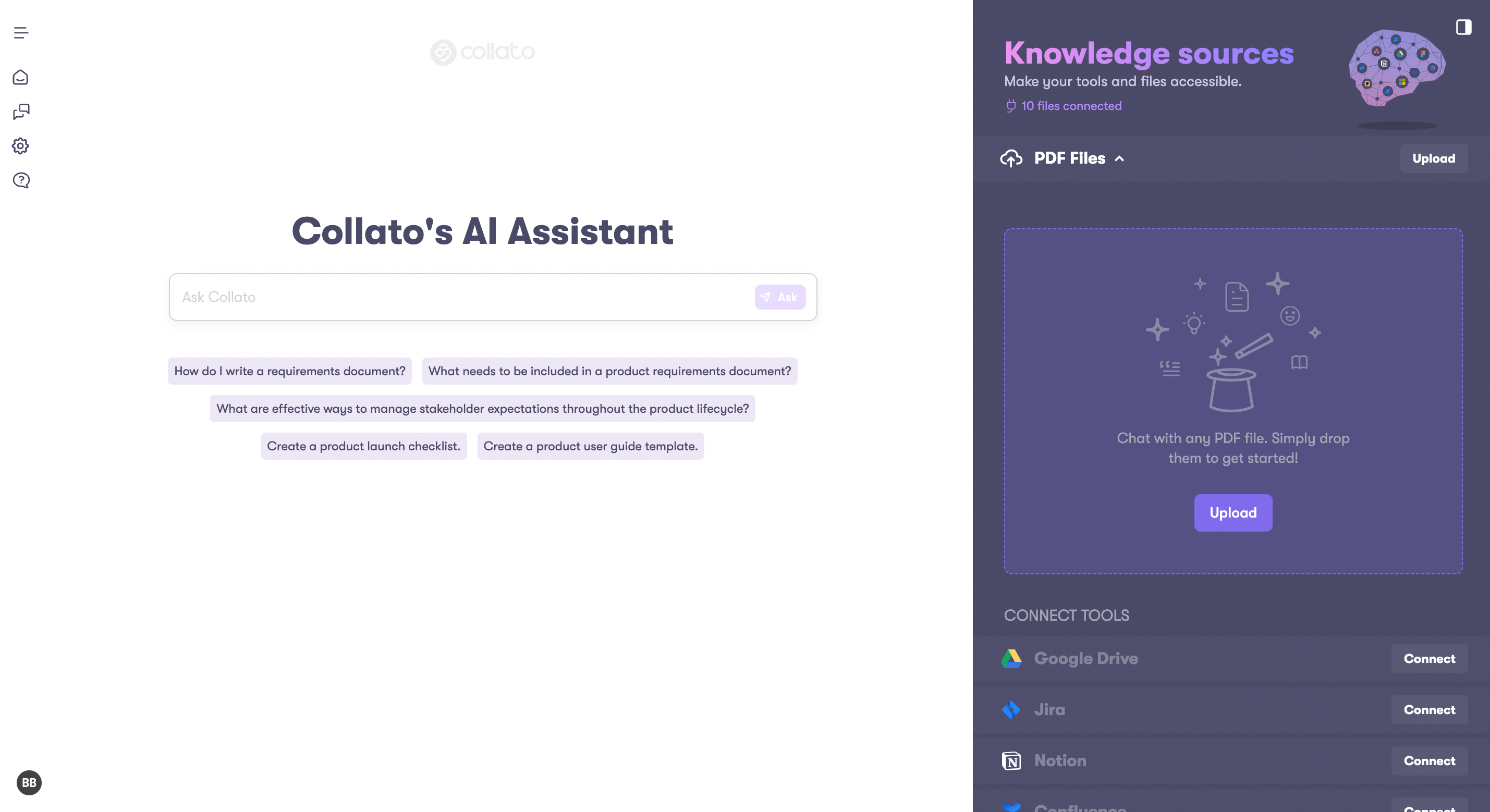
Collato can be used for a variety of tasks, including:
- Answering questions about your team's knowledge base
- Generating summaries of long documents or meeting minutes
- Creating new documents from existing content
Collato is designed to be easy to use, and it does not require any coding knowledge. To use Collato, you simply need to connect your productivity tools and then ask Collato a question or give it a task. Collato will then use its AI capabilities to find and process the relevant information from your team's knowledge base and provide you with the answer or complete the task as requested.
Collato is a powerful tool that can help you to save time and be more productive. It is particularly useful for teams that have a large amount of knowledge stored in different places. Collato can help you to bring all of your team's knowledge together in one place and make it easily accessible to everyone.
Here are some of the key features of Collato:
- AI-powered search: Collato uses AI to search for and retrieve information from your team's knowledge base. This makes it easy to find the information you need, even if it is buried in a long document or buried deep in your team's Slack channel.
- Summary generation: Collato can generate summaries of long documents or meeting minutes. This can be useful for saving time and getting the key points of a document without having to read the entire thing.
- Content generation: Collato can create new documents from existing content. This can be useful for creating blog posts, social media posts, or other types of content from existing product documentation, customer testimonials, or other sources.
Introduction to ChatGPT
ChatGPT, developed by OpenAI, is another popular AI language model designed to converse and engage with humans.
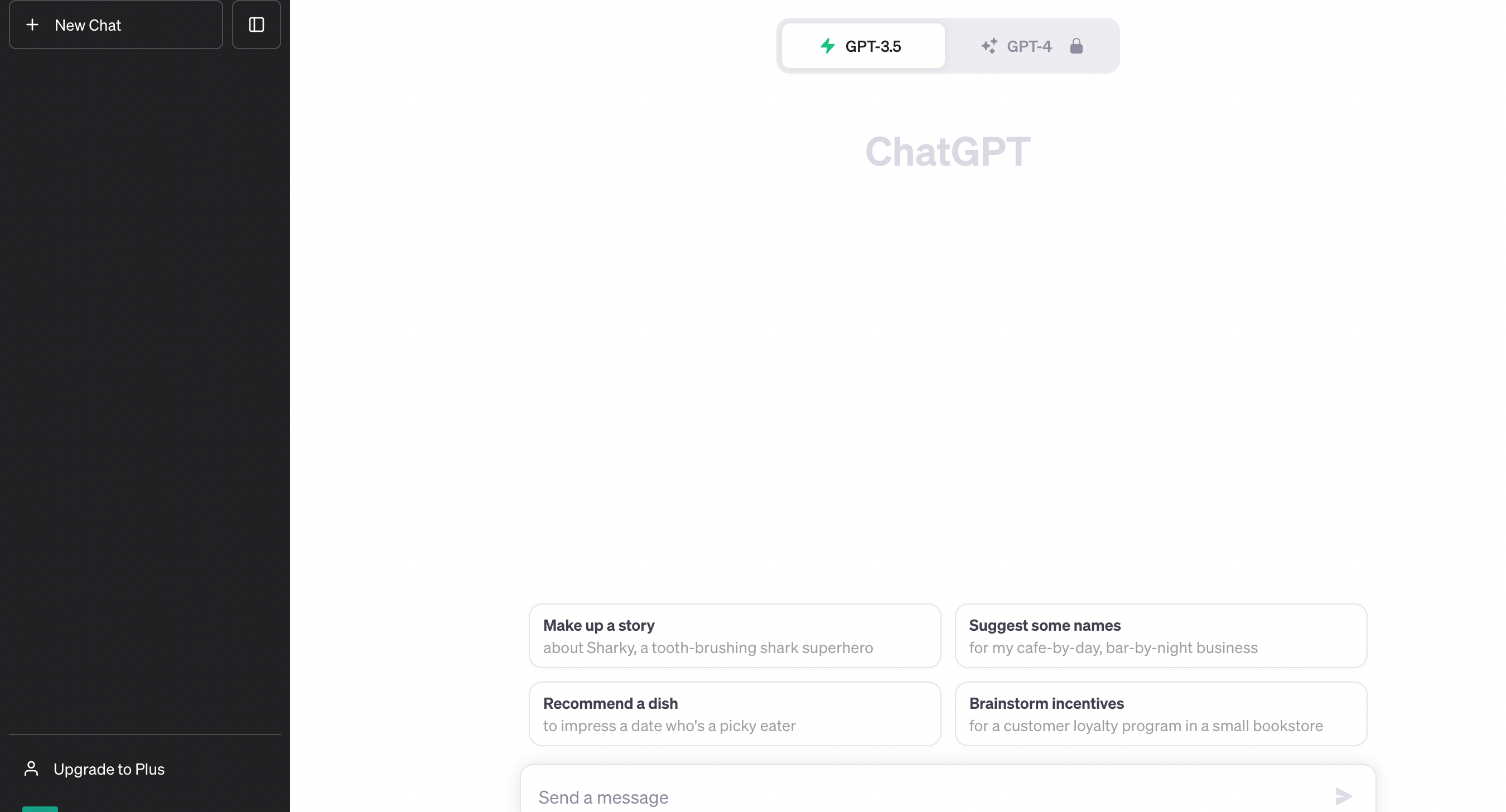
It was designed to generate a human-like conversation that is both meaningful and engaging. It has since been used in customer service, personal assistants, tutoring, and more.
- Technical Architecture and AI Framework: Like Bard, ChatGPT also uses a transformer-based architecture and is trained using Reinforcement Learning from Human Feedback (RLHF), which allows it to generate highly contextual and coherent responses.
- Unique Features and Strengths: ChatGPT stands out in its ability to hold a conversation across diverse topics. It can generate detailed responses and even create creative content.
- Limitations and Challenges: Despite its strengths, ChatGPT also has its limitations. It might sometimes generate incorrect or irrelevant information. Handling nuanced or complex queries can also be a challenge.
- Use-cases and Success Stories: ChatGPT has been used in various applications like drafting emails, writing code, learning new topics, creating content, customer service, and even mental health applications.
Introduction to Bard
Bard is an AI language model that has gained recognition for its ability to generate human-like text.
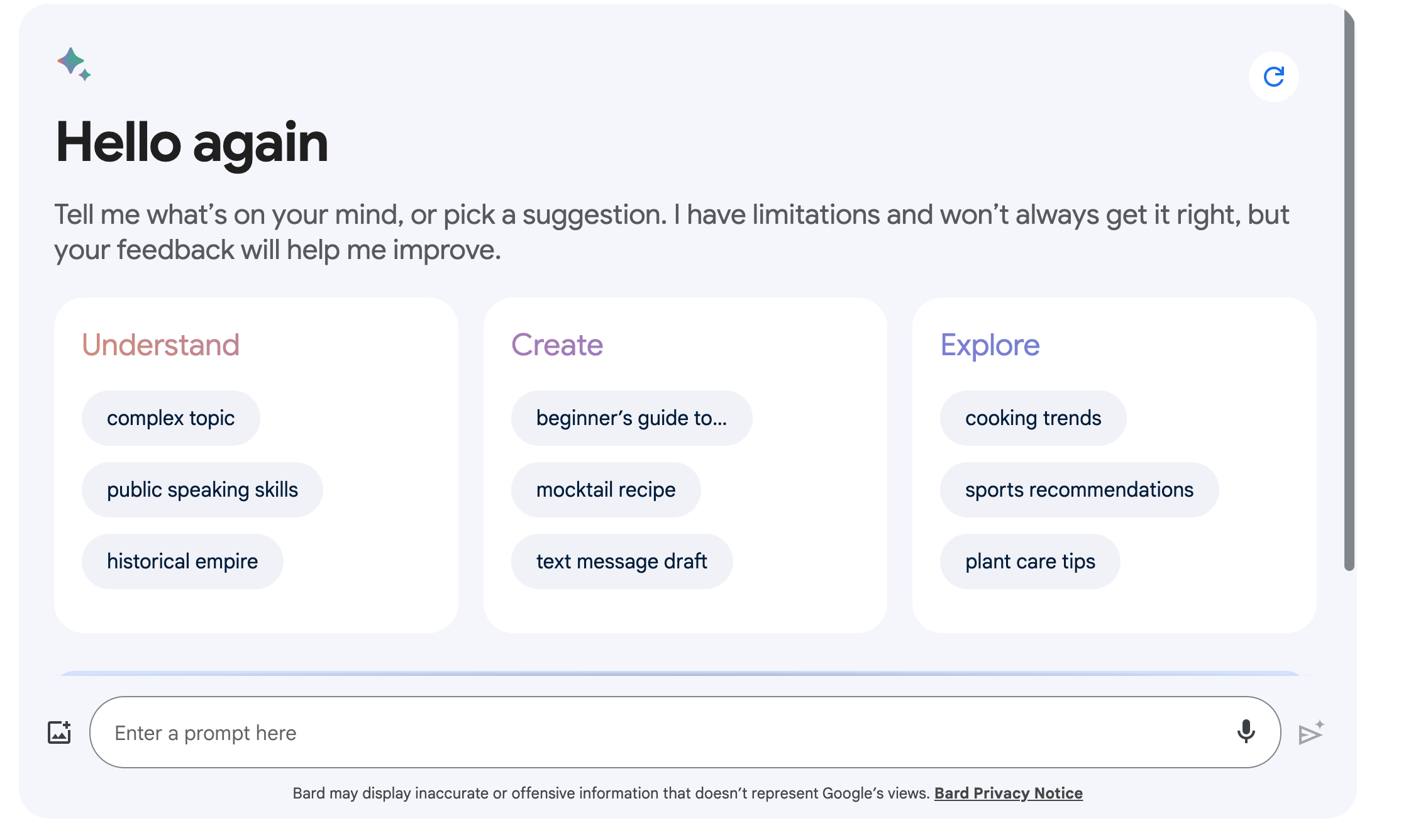
Bard, named for its storytelling prowess, was developed to generate creative and coherent narratives. Its development was guided by creating a model that could understand the context and create meaningful, engaging dialogue.
- Technical Architecture and AI Framework: Bard utilizes a transformer-based architecture, which allows it to understand the context in a sentence structure. This architecture, combined with a machine-learning algorithm, enables Bard to generate text that mirrors human-like conversation.
- Unique Features and Strengths: Bard stands out with its ability to create dynamic narratives and dialogues. Its major strengths lie in its understanding of context, creativity, and the ability to maintain a conversational flow.
- Limitations and Challenges: Bard, like all AI models, has limitations. It may occasionally produce content that's off-topic or less coherent. Additionally, maintaining a consistent tone in lengthy narratives can be challenging.
Use-cases and Success Stories: Bard has found use in various sectors such as entertainment (scriptwriting), education (creating study material), and businesses (generating engaging content).
Direct Comparison: Collato vs. ChatGPT vs. Bard
Now that we've examined these three AI language models, let’s compare:
- Technical Architecture: All three models use a transformer-based architecture, which makes them highly efficient in understanding context and generating text.
- Performance and Capabilities: All three models excel at generating human-like text. Collato is particularly good at summarizing and generating content from existing knowledge bases, while ChatGPT is known for its conversational flow and ability to generate creative text formats. Bard is a general-purpose LLM that performs well on a wide range of tasks, including question-answering, translation, and creative writing.
- User Experience and Interface: All three models are designed to be user-friendly, but they have different strengths and weaknesses. Collato’s AI assistant is best integrated with productivity tools, while ChatGPT is a stand-alone chatbot. Bard is a bit different, as it is integrated with Google Search.
- Ethical Considerations: All three models are programmed to refuse to generate harmful or inappropriate content.
- Deployment and Scalability: All three models can be deployed across numerous applications and can scale up as per demand. However, the specific implementation may determine the ease of deployment and scalability.
PaLM vs. OpenAI
PaLM and OpenAI are both large language models. They are both trained on large text and code datasets and are adept at generating text, translating languages, writing a variety of creative content, and generating informative answers.
PaLM is a significantly larger model than GPT-3, with 540 billion parameters compared to GPT-3's 175 billion parameters. What does this mean? Well, the number of parameters in a language model is a measure of its size and complexity. Having more parameters means more flexibility to identify patterns and learn from them. Since PaLM has considerably more parameters than GPT-3, it’s better and faster at many tasks like generating informative responses.
That being said, the size of the model isn’t everything. The quality of the data that is used to train the models is also critical. It’s hard to definitively say which LLM has the highest quality of training data, but PaLM is generally considered to be trained on more diverse data. And Google has announced that it will start training the model on even larger and more diverse datasets, too.
PaLM isn’t as readily available as GPT-3 is, though. Google has announced plans to release a public API something in the future. OpenAI’s GPT-3, on the other hand, is easily and publicly available.
Alternatives to ChatGPT and Bard
AI language models have proliferated, and several significant models offer competition to Bard and ChatGPT. Let's explore a few of these.
Collato
Collato is an AI-powered assistant designed to help find, summarize, and generate new content from your team’s collective knowledge. It integrates with popular productivity tools like Slack, Jira, Confluence, and Google Docs. After integrating your tools, you can ask Collato anything about your work docs, and it can even generate content based on them, too. From summarizing your weekly Friday morning meeting, to writing a tweet for your new product launch, Collato’s got you covered.
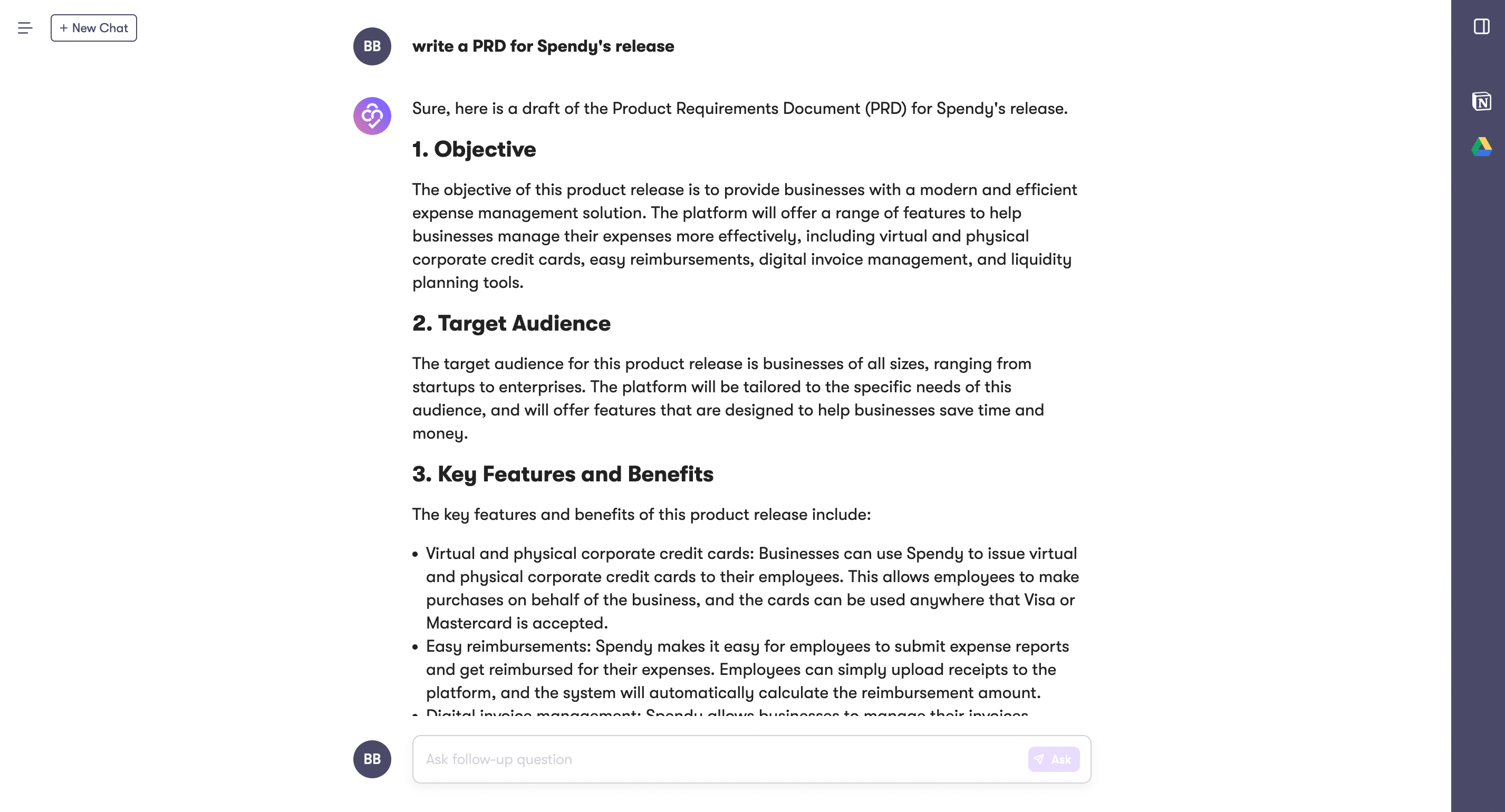
- Features
AI-powered search: Collato uses AI to search for and retrieve information from your team's knowledge base. This makes it easy to find the information you need, even if it is buried in a long document or deep in a misplaced file.
Summary generation: Collato can generate summaries of long documents or meeting minutes. This can be useful for saving time and getting the key points of a document without having to read the entire thing.
Content generation: Collato can create new documents from existing content. This can be useful for creating blog posts, social media posts, or other types of content from existing product documentation, customer testimonials, or other sources.
Integration with popular productivity tools: Collato integrates with popular productivity tools such as Slack, Jira, and Confluence.
Collaboration features: Collato allows you to share and collaborate on documents with other team members. This makes it easy to work on projects together and to keep everyone on the same page.
Security and privacy: Collato takes security and privacy seriously. All of your data is encrypted and stored in secure servers.
Microsoft Bing Chat
Microsoft Bing AI is another significant player when it comes to ChatGPT alternatives. Bing Chat differs from other LLMs because it is heavily integrated with other Microsoft tools like Bing Search.
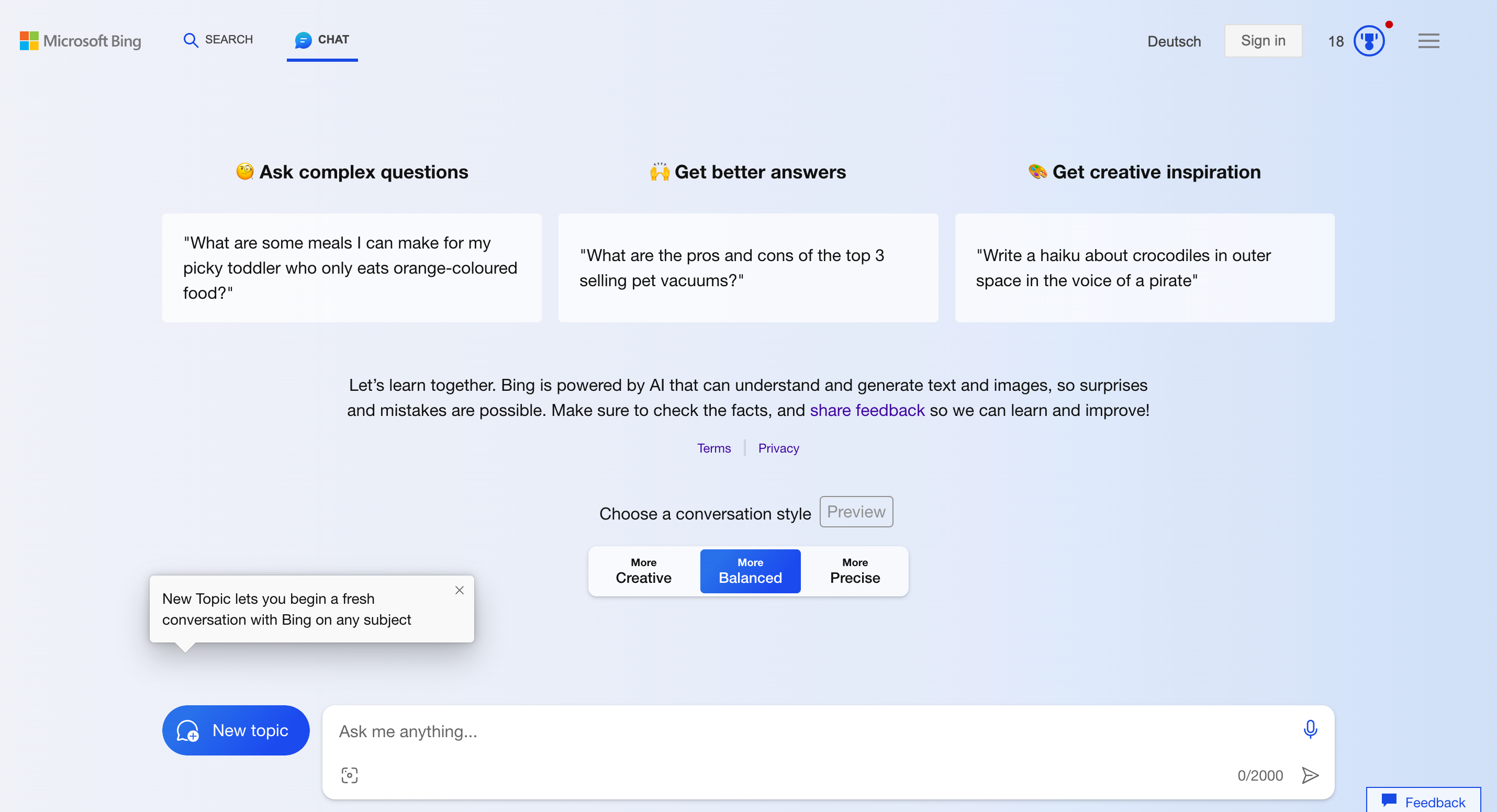
- Features
Microsoft Bing’s AI provides deep contextualized word representations. Each word has different embeddings based on its contextual use.
- Strengths
This model excels in understanding the context, improving semantic accuracy, especially for words with multiple meanings.
- Limitations
While Bing's Natural Language Processing (NLP) abilities are constantly improving, there are still limits to its understanding. Ambiguity, irony, or region-specific language use can sometimes result in inaccuracies in search results.
Chatsonic
Chatsonic is a cutting-edge AI tool, positioning itself as an efficient and dynamic alternative to ChatGPT. Using the processing power of GPT-4, Chatsonic answers virtually any query.
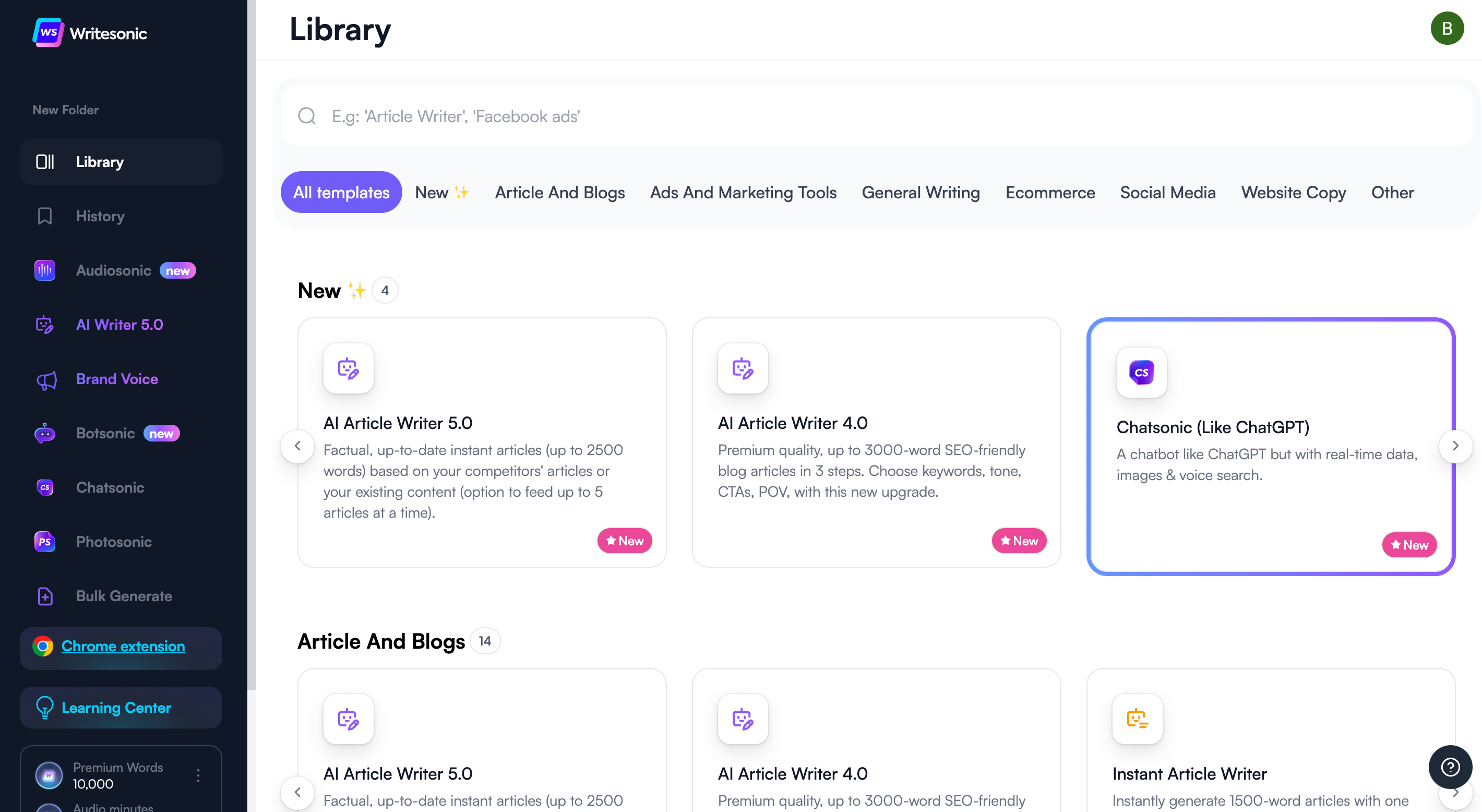
- Features
Chatsonic is powered by the GPT-4 model, which incorporates the most advanced language processing techniques. This allows it to understand context, detect nuances, and generate human-like responses.
- Strengths
The tool's extensive knowledge base encompasses a wide range of subjects. It can answer queries in areas like science, technology, humanities, and more.
- Limitations
As Chatsonic relies on the training data it was fed, it may struggle with questions about events or information beyond its knowledge cutoff in 2021.
Tl;dr
Whether you’re looking for the efficiency of Collato in streamlining knowledge and productivity, the conversational finesse of ChatGPT, or the storytelling expertise of Bard, these AI assistants redefine the boundaries of human-machine interaction. Beyond these established pillars, emerging alternatives like Microsoft Bing Chat, and Chatsonic welcome a new era in AI-driven conversations.
Both Bard and ChatGPT have their unique strengths and limitations. The choice between the two would largely depend on the specific requirements of the application and if the tool is available in your region. The good news is, that there are many alternatives to both ChatGPT and Bard (like Collato!) so there is likely to be an AI chat model to suit your needs.
As AI language models continue to evolve, so will these tools, enriching our interactions with technology even further.




